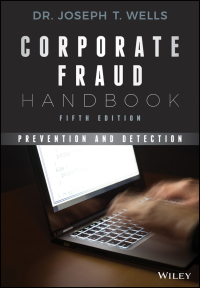Question
1. Manero Company included the following information in its annual report: 20X3 20X2 20X1 Sales $ 178,400 $ 162,500 $ 155,500 Cost of goods sold
1. Manero Company included the following information in its annual report:
| 20X3 | 20X2 | 20X1 | |||||||||
| Sales | $ | 178,400 | $ | 162,500 | $ | 155,500 | |||||
| Cost of goods sold | 115,000 | 102,500 | 100,000 | ||||||||
| Operating expenses | 50,000 | 50,000 | 45,000 | ||||||||
| Operating income | 13,400 | 10,000 | 10,500 | ||||||||
In a common-size income statement for 20X3, the operating expenses are expressed as
-
28.0%
-
30.3%
-
43.8%
-
100.0%
2. A change in accounting principle that is implemented in 20X1 with full retrospective effect will result in which of the following, as reported in the financial statements presented in the 20X1 annual report?
-
Net income for 20X1 that is determined under the same accounting method as the 20X0 amount (in the 20X1 report).
-
Net income for 20X0 that is likely different from the amount originally reported for 20X0.
-
Financial statements in 20X1 as if the company had always used the new accounting method.
-
All of these answers are correct.
3. In a trend balance sheet, each balance sheet item is expressed as a percentage of
Multiple Choice
-
total assets.
-
the base year item.
-
sales.
-
equity.
4. Manero Company included the following information in its annual report:
| 20X3 | 20X2 | 20X1 | |||||||||
| Sales | $ | 178,400 | $ | 162,500 | $ | 155,500 | |||||
| Cost of goods sold | 115,000 | 102,500 | 100,000 | ||||||||
| Operating expenses | 50,000 | 50,000 | 45,000 | ||||||||
| Operating income | 13,400 | 10,000 | 10,500 | ||||||||
In comparison to year 20X2 the increase in operating income of 20X3 was primarily caused by (ignore taxes):
Multiple Choice
-
the effect of sales growth.
-
the effect of cost of goods sold growth.
-
the effect of margin growth.
-
the answer cannot be derived from the information provided.
5. Condensed financial data are presented below for the Phoenix Corporation:
| 20X2 | 20X1 | |||||||||||
| Accounts receivable | $ | 267,500 | $ | 230,000 | ||||||||
| Inventory | 312,500 | 257,500 | ||||||||||
| Total current assets | 670,000 | 565,000 | ||||||||||
| Intangible assets | 50,000 | 60,000 | ||||||||||
| Total assets | 825,000 | 695,000 | ||||||||||
| Current liabilities | 252,500 | 200,000 | ||||||||||
| Long-term liabilities | 77,500 | 75,000 | ||||||||||
| Sales | 1,640,000 | |||||||||||
| Cost of goods sold | 982,500 | |||||||||||
| Interest expense | 10,000 | |||||||||||
| Income tax expense | 77,500 | |||||||||||
| Net income | 127,500 | |||||||||||
| Cash flow from operations | 71,000 | |||||||||||
| Cash flow from investing activities | (6,000 | ) | ||||||||||
| Cash flow from financing activities | (62,500 | ) | ||||||||||
| Tax rate | 30 | % | ||||||||||
The total asset turnover ratio for 20X2 is (rounded):
Multiple Choice
-
1.7 times.
-
2.0 times.
-
2.2 times.
-
2.4 times
Step by Step Solution
There are 3 Steps involved in it
Step: 1

Get Instant Access to Expert-Tailored Solutions
See step-by-step solutions with expert insights and AI powered tools for academic success
Step: 2

Step: 3

Ace Your Homework with AI
Get the answers you need in no time with our AI-driven, step-by-step assistance
Get Started


